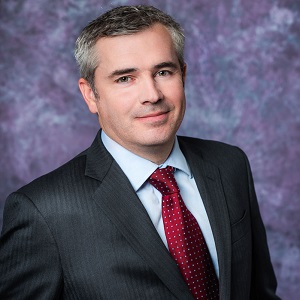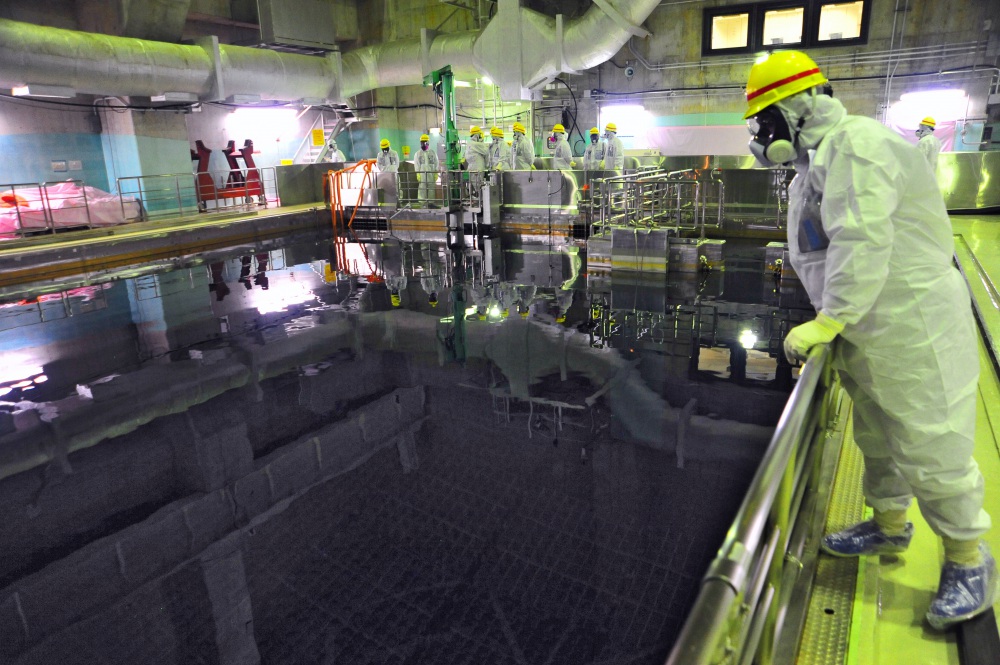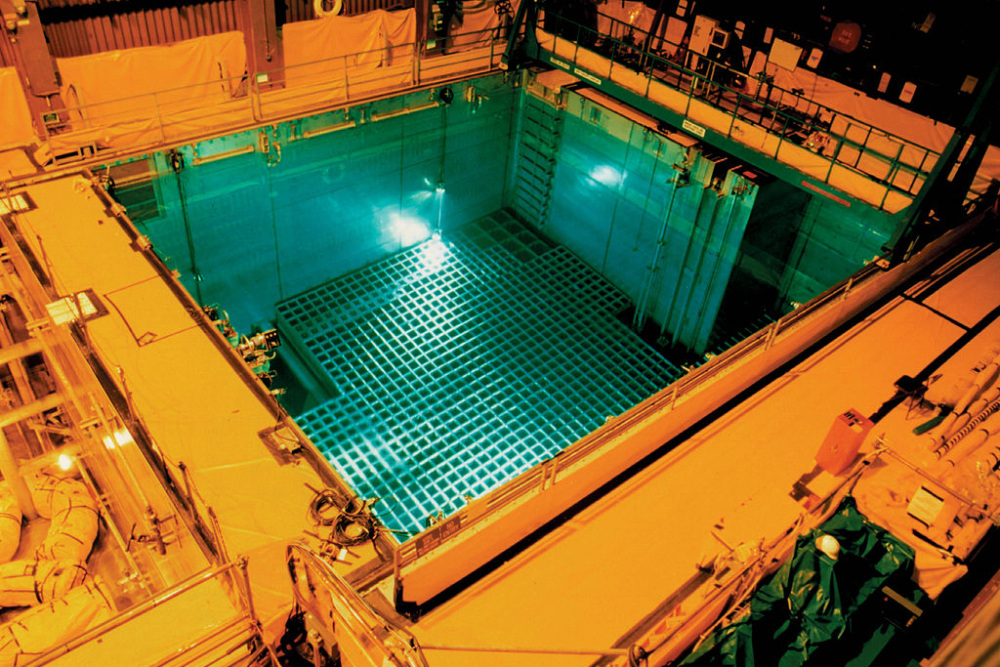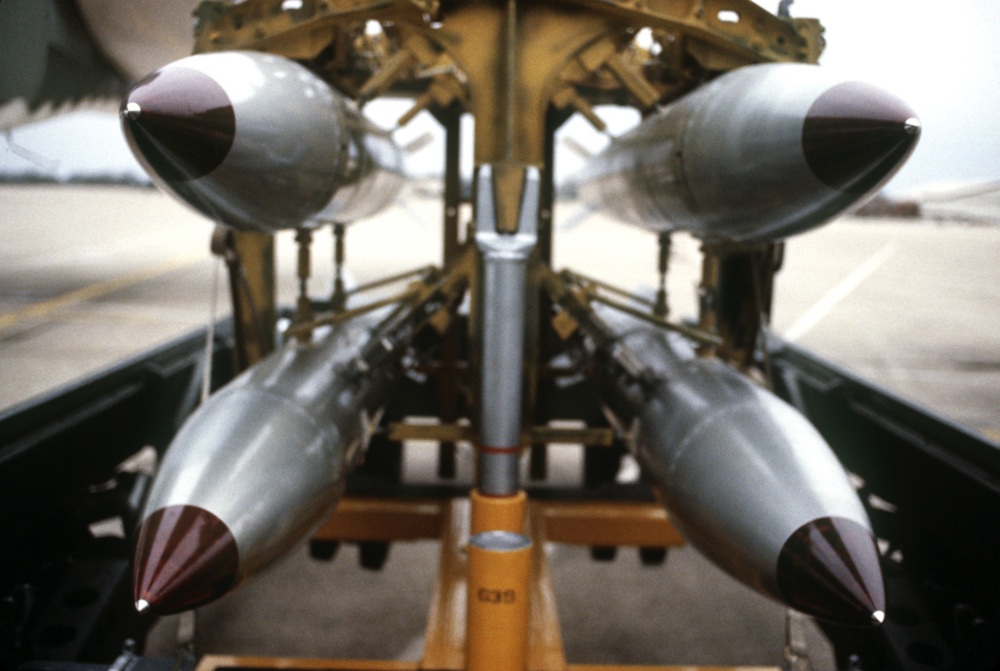The Issues
Thirty-one countries plus Taiwan operate nuclear power plants; on the other hand, sensitive fuel cycle capabilities are concentrated in fewer than ten countries. Globally, reactors generate about 10,500 metric tons of spent fuel each year. More than 270,000 metric tons of spent fuel is held in storage worldwide, most at reactor sites. About 90 percent of that spent fuel is in storage pools, the remainder is in dry casks. In addition, the amount of separated plutonium continues to grow internationally because it cannot be consumed as quickly as it is produced; decisions about reprocessing are often disconnected from use of the recovered products.
Geological disposal is the internationally accepted strategy for permanently isolating spent nuclear fuel and high-level waste. Political and technical difficulties have so far delayed and, in many cases, prevented the construction and operation of any commercial repositories, though programs in several countries are making significant progress. Meanwhile, spent fuel continues to accumulate in cooling pools with limited storage capacity. On-site dry cask storage is a mid-term but still temporary solution, and reprocessing and recycling still generate significant waste streams that require permanent disposal. Both storage and disposal programs are needed: storage provides the interim solution until the repository is operating; the repository program provides a permanent solution and the necessary public and political assurance that the storage site will not become a de facto repository.
Spent nuclear fuel needs to be stored for extended periods of time until the fuel has cooled sufficiently before repositories can begin accepting it – perhaps 40 years or more. In addition, increasingly high burn-up fuel and large dry storage canisters make moving spent fuel stored in such canisters problematic in the short to medium term because the allowable thermal and radiation limits for transportation can be substantially lower than the limits for storage, requiring an extended period of aging before the canisters have cooled down enough to be moved. In most cases it will be decades before repositories are open and able to accept waste in sufficient quantities to begin to significantly draw down the inventory. The longer spent fuel is stored, the less self-protecting it becomes as the strongly radiating shorter lived isotopes that provide the protection continue to decay, and thus as it becomes less radioactive, the greater security risk it presents. Therefore high priority should be given to spent fuel storage options in program planning. Consideration should be given to siting interim storage facilities in locations where final disposal might also be feasible; co-location with nuclear power plants has also proven to be a sound strategy in some cases.
Despite the well-developed repository programs in Sweden, Finland and France, and encouraging progress towards siting national repositories in the UK and Canada, the vast majority of countries continue to struggle with developing and implementing plans to safely and securely dispose of the waste produced by nuclear power programs. The lack of spent fuel management options – both interim storage and final disposal – strains the credibility of the nuclear community and undercuts public and political acceptance for all nuclear activities. Continuing along this path is ultimately unsustainable.
The United States has no effective program for managing and ultimately disposing of the spent fuel and high-level radioactive waste produced by the nation’s nuclear power plants. Thirty years after the Nuclear Waste Policy Act was signed into law mandating the operation of a geologic repository by January 31, 1998, there is no active U.S. repository program. Years of work and billions of dollars have to date proven unsuccessful in meeting the nation’s spent fuel management and disposal needs. This has a direct impact on the prospects for nuclear power domestically as well as the U.S. ability to lead and influence fuel cycle developments in the rest of the world; the U.S. is unable to lead by example.
For all countries, spent fuel presents both a waste management issue and a proliferation and security issue. The decisions that are made on the back end of the fuel cycle (activities that could include dry cask storage of spent fuel, shipping of spent fuel to away-from-reactor storage or to a reprocessing plant and, eventually, the final disposal of the spent fuel or the reprocessed high level waste) can include sensitive nuclear technologies such as plutonium separation. Meanwhile inventories of spent fuel continue to accumulate at reactor sites across the globe. Failure to manage these problems threatens national, regional and international security, exacerbates nonproliferation risks, jeopardizes the future of nuclear power and impacts serious efforts to deal with climate change.
Cooperative Approaches
Cooperative approaches to spent fuel management offer a number of potential benefits. They could enhance global security, promote economies of scale, enable spent fuel to be consolidated more quickly at storage facilities and perhaps allow earlier access to disposal facilities, lower environmental impacts, provide a wider choice of geological conditions, present a business opportunity for the host country, provide an incentive for countries to forego enrichment and reprocessing, enhance regional transparency and confidence, enable the integration of engineering, hard science and social science research, create ‘breathing room’ (i.e. interim storage) while disposal options are developed and demonstrate safe operation which helps build trust. If combined with a nuclear security regime, they could also enhance security and nonproliferation.
Many countries facing storage and final disposal siting challenges (geologic, financial and political) have strong interests in cooperating. In particular, about half of the countries currently operating nuclear power plants have fewer than five reactors. This means they do not accumulate spent fuel very quickly. It also means that spent fuel management becomes proportionately a very expensive component of these countries’ nuclear programs. Access to a disposal pathway that removes responsibility for spent fuel management may make more sense financially and, in most cases, politically. Even countries with larger programs may find economic, security, and even political benefits in multinational approaches.
Spent fuel management in many European nations is considered a ‘European challenge’ that for some countries might be best solved by multinational cooperation. Notably, the European Council adopted a legally binding and enforceable European Commission proposal on 19 July 2011 which read in part: “Radioactive waste shall be disposed of in the Member State in which it was generated, unless agreements are concluded between Member States to use disposal facilities in one of them.” Other regions, including several countries in Asia, may choose to take the same approach although it should be noted that the complexities of managing liability and other legal arrangements are minimized to a significant extent in the EU and Euratom due to an existing common understanding of basic concepts and an agreed regulatory framework.
The creation of cooperative networks and regional frameworks for storage and disposal would be a productive way to pursue spent fuel management, particularly in Japan, South Korea and Taiwan where storage space shortages in spent fuel pools are becoming acute. There are no such groupings or approaches at present in Asia. A regional approach could present a ‘win-win-win’ path forward (globally, in Asia and in the US), allowing for the safe and effective expansion of nuclear power while simultaneously reducing security and nonproliferation concerns and helping to solve the spent fuel/high level waste dilemma.
However, sensitivity to the mutual impacts of national and multinational initiatives is vital. The possibility of multinational options arising should not be used as an excuse for countries to neglect domestic responsibilities; all countries must have a vibrant national program for spent fuel management. By the same token, national programs should not oppose multinational approaches. International organizations such as the IAEA and the NEA should develop and promote consistent and even-handed views on both approaches.
Toward Solutions
For waste management programs to have best chance of success, it is extremely important to recognize that a national problem exists and for that recognition to translate into a national commitment to provide a solution in a reasonable amount of time. The problem cannot just be put off for future generations to deal with when the current generation is continuing to create the waste as it benefits from nuclear power. Several countries have had a national debate that led to a decision in principal which provided the foundation for, and clear national incentive to, address the problem. As the Blue Ribbon Commission on America’s Nuclear Future (BRC) observed: “This generation has a fundamental ethical obligation to avoid burdening future generations with the entire task of finding a safe permanent solution for managing hazardous nuclear materials they had no part in creating . . . while also preserving their energy options.” However, trying to find a host community should not be the first step in any national or regional spent fuel management strategy. Rather, it should be the eventual outgrowth of an adaptive, staged approach. For regional approaches, there are many types of cooperation short of disposal (e.g. research and development on materials and aging issues common to all parties, joint canister construction, transportation methods) that could be helpful starting points for a dialogue. Achieving a consensus view on the potential benefits and drawbacks of a range of cooperation including consideration of an ultimate multinational facility is a key prerequisite in this process.
A consent-based staged, adaptive approach has allowed successful national programs to move forward toward a consistent set of goals (that is, safe storage and timely disposal of HLW/SNF) while preserving the flexibility necessary to adjust to both changing conditions and opportunities to improve through the lengthy program period. This has been recommended also by the BRC for the future US program. Understanding that siting spent fuel storage and disposal facilities is extremely difficult, creative approaches to local community engagement, such as the Dutch Central Organisation for Radioactive Waste’s Highly Radioactive Waste Treatment and Storage Building (HABOG) which is orange and will be repainted in progressively lighter shades until it is white in about 100 years to reflect the reduction in the waste’s heat production, should be publicized widely.
Viewing the management of commercial spent fuel as a contribution to national security is a powerful motivator – and drives US and Russian threat reduction programs converting research reactors using HEU fuel to LEU and removing HEU from as many sites and countries as possible – but this argument has not been sufficiently emphasized with commercial spent fuel in many places. According to a 2007 US-Russian National Academies workshop, “arrangements that would provide assured return of spent nuclear fuel could provide a much more powerful incentive for countries to rely on international nuclear fuel supply than would assured supply of fresh fuel, because assured take-back could mean that countries would not need to incur the cost and uncertainty of trying to establish their own repositories for spent nuclear fuel or nuclear waste.”
To be sure, large challenges remain for regional/international storage, disposal and take-back initiatives but the alternative – requiring each nuclear power nation to be self-sufficient at the back-end – is equally challenging. Serious consideration of factors such as security, non-proliferation and cost require the attention of all nuclear nations, particularly countries with small nuclear programs and limited resources as well as countries with large nuclear programs.
Economics is not necessarily one of those challenges. While spent fuel disposal appears to be quite expensive, it is in fact a small fraction of the overall cost of electricity generated by nuclear power – roughly 5% of the total cost to the consumer. Therefore even significant rises in the cost of waste management do not present a substantial penalty to overall delivered costs, particularly when compared to the potential costs of failure to provide a workable disposal solution. Indeed, geological disposal can, in principle, be both a business venture and a public service. And while no viable business ventures have been initiated yet, the business case for spent fuel management is not the problem. What is needed is a driver (i.e. a country/countries and an initiative) to move things forward.
Several developments may serve as game changers for timely waste and broader fuel cycle management solutions in other parts of the world, including:
-
The first operating national repository for HLW/SNF. This might help to build confidence and overcome political resistance in other parts of the world, although it should be noted that licensing and operation of the U.S. Waste Isolation Pilot Plant (WIPP), the first custom-built deep repository, albeit for what would be considered intermediate level waste from military programs rather than HLW, did not have this effect;
-
One or more countries providing a spent fuel take-back service. This could be an effective solution for many nuclear waste generators (from a security, safety and financial perspective) if an appropriate supplier country was willing to offer this service. Russia is promising to take back spent fuel as part of its nuclear reactor deals with Iran, Turkey and Vietnam. Providing that the country can ensure state-of-the-art competence and facilities to store and/or dispose of the spent fuel, the international community should support any and all such offers, recognizing that they enhance regional and global safety and security;
-
If China or perhaps Russia became the eventual market leader in supplying nuclear reactors and the accompanying fuel cycle. Impacts of such developments on safety, security, non-proliferation and waste management would need to be evaluated;
-
A renewed multinational decision to minimize the impacts of climate change and a fundamental understanding and commitment to nuclear power as a key element in achieving that goal.
Findings – General:
-
The lack of a repository program strains the credibility of the nuclear community and undercuts public and political acceptance for all nuclear activities.
-
States must recognize that a national waste management problem exists and translate that recognition into a national commitment to provide a solution. Both storage and disposal programs for HLW/SNF are needed. Consideration should be given to siting interim storage facilities in locations where final disposal might also be feasible.
-
Spent fuel disposal appears to be quite expensive but is in fact a small fraction of the overall cost of electricity generated by nuclear power.
-
The almost nonexistent back-end market potentially offers opportunities for leveraging the provision of a spent fuel disposal pathway in return for a commitment not to pursue sensitive fuel capabilities such as enrichment and reprocessing. Geological disposal can, in principle, be both a business venture and a public service.
-
If reprocessing is pursued as part of a closed fuel cycle, the stockpiling of plutonium should be avoided and recycling should be undertaken as soon as possible afterward to reuse the separated plutonium promptly to the maximum extent.
-
A consent-based staged, adaptive approach to spent fuel management is proven global best practice. Trying to find a host community should not be the first step in any national or regional spent fuel management strategy, rather the eventual outgrowth of an adaptive, staged approach. Types of cooperation short of disposal (such as cooperative research and development and joint canister construction) can be helpful starting points for discussions aimed at regional approaches to spent fuel management.
-
Viewing the management of commercial spent fuel as a contribution to national security would be a powerful motivator.
-
Many countries facing storage and final disposal siting challenges (geologic and political) have an interest in regional approaches to spent fuel management. New nuclear entrants with small power programs or plans for such programs have a strong interest in regional approaches to spent fuel storage and disposal given that spent fuel management is proportionately a very expensive component of their nuclear programs.
-
Large challenges remain for multinational storage and disposal initiatives but the alternative – requiring each nuclear power nation to be self-sufficient at the back-end – is equally challenging. Sensitivity to the mutual impacts of national and multinational initiatives is vital.
-
There is an urgent and growing need for spent fuel solutions in Asia, particularly in Japan, South Korea and Taiwan. The creation of cooperative networks and regional frameworks for storage and disposal would be a productive way to pursue spent fuel management in the region.
Findings – US:
-
Getting the U.S. house in order – While the principal objective for the present must be to get the waste management program in order and moving forward, a better understanding of the relationship and potential links between a successful domestic waste management program and U.S. international objectives and priorities is also critical. U.S. influence over international nuclear developments, and the back end of the fuel cycle in particular, is substantially affected by the status of domestic programs and policies.
-
It will be essential for the U.S. to play a major, constructive role in any regional initiatives. A prime reason for this, particularly from the Asian perspective, is that US-supplied fuel powers much of the region. There are also strong global climate change, regional/international security and nonproliferation reasons for the U.S. to galvanize such initiatives.
-
Sustained U.S. engagement in cooperative regional fuel cycle/spent fuel management initiatives may help to arrest the general drift in U.S. international nuclear engagement, which has tended to be episodic and tactical, and promote a more sustained and holistic approach. Without this, countries may well continue to look to others, such as Russia, for assistance and leadership in the nuclear field.
Recommendations – General:
-
Asian Group on Coordination of Spent Fuel Management – The creation of an ‘Asian Group on Coordination of Spent Fuel Management,’ consisting of experts from government, industry, academia, research institutes and NGOs with political support from senior government officials, technical support from the national centers of expertise and sustainable funding, would send a very powerful signal of commitment to the region and internationally. Eventually this regional network – a human network – would require international obligations and commitments from government and industry.
-
Storage priority – Given the periods of time required for spent nuclear fuel to cool sufficiently and before repositories are open and able to accept waste, high priority should be given to spent fuel storage options in program planning.
-
Once-through vs. closed fuel cycles – It is important that a clear analysis demonstrate, as quantitatively as is feasible, the differences between once-through fuel cycle programs and reprocessing/recycling programs with regard to national security and non-proliferation, as well as their impact on waste management in terms of costs, volumes, physical forms and toxicity of wastes, long term containment, etc.
-
Added value’ projects – Addressing non-technical issues when dealing with the public and their elected representatives at all levels of government has been shown to provide substantial benefits and has helped to make the siting of waste management facilities successful in several countries. Examples of ‘added value’ include generating feelings of pride in the disposal mission (and spreading that message through site tours and speaking engagements), and providing a public service as well as contributing to regional and international security.
-
Publicizing innovation – Innovative solutions to spent fuel management in other parts of the world should be publicized. Discussing efforts that have been unsuccessful, and explaining why, can also serve a valuable educational purpose. Lessons learned should not be limited simply to the nuclear industry; important lessons can be drawn from other industries that require the use of controversial facilities.
-
Topics for immediate discussion – There are many technical and non-technical topics that can be studied collaboratively by regional partnerships that avoid the third rail of finding host sites, including:
-
Long-term performance of wet and dry storage, long-term performance of SNF inside dry casks and different cask types;
-
Spent fuel transportation;
-
Security aspects of spent fuel management;
-
Siting strategies and criteria for (national) storage and disposal facilities;
-
Comparison of direct disposal with (advanced) reprocessing strategies focusing on resulting waste inventories’ characteristics;
-
Public communication and dialogue.
-
Virtual multinational laboratory – The establishment of a ‘virtual multinational laboratory’ to support collaborative regional/international work on spent fuel management challenges might be one way to foster technical and institutional cooperation. This could complement and strengthen the above-mentioned Asian Group on Coordination of Spent Fuel Management but not replace it.
-
The need for action on creating spent fuel management pathways is urgent and first steps must be undertaken now. These steps should be small but concrete, with the initial emphasis on confidence-building measures.
Recommendations – United States
Incentivizing industry – In countries with successful programs such as Sweden and Finland, in a variety of ways, the waste producers (utilities) play a meaningful role in making sure the spent fuel management program is moving forward. This push appears seriously lacking in the U.S. Industry should be engaged by government to help lead storage and disposal efforts, not simply provide funding.
A new waste management organization – as recommended by the BRC, a new, single-purpose organization is needed to provide the stability, focus, and credibility that are essential to get the U.S. waste program back on track.



